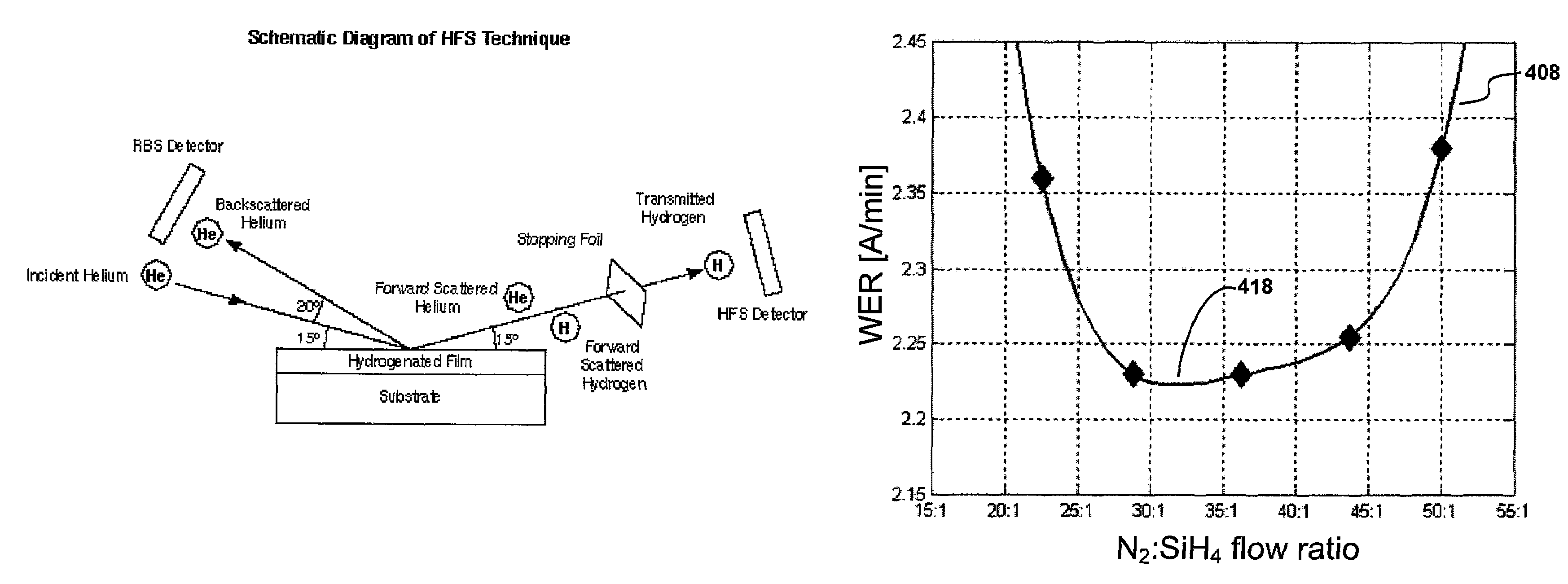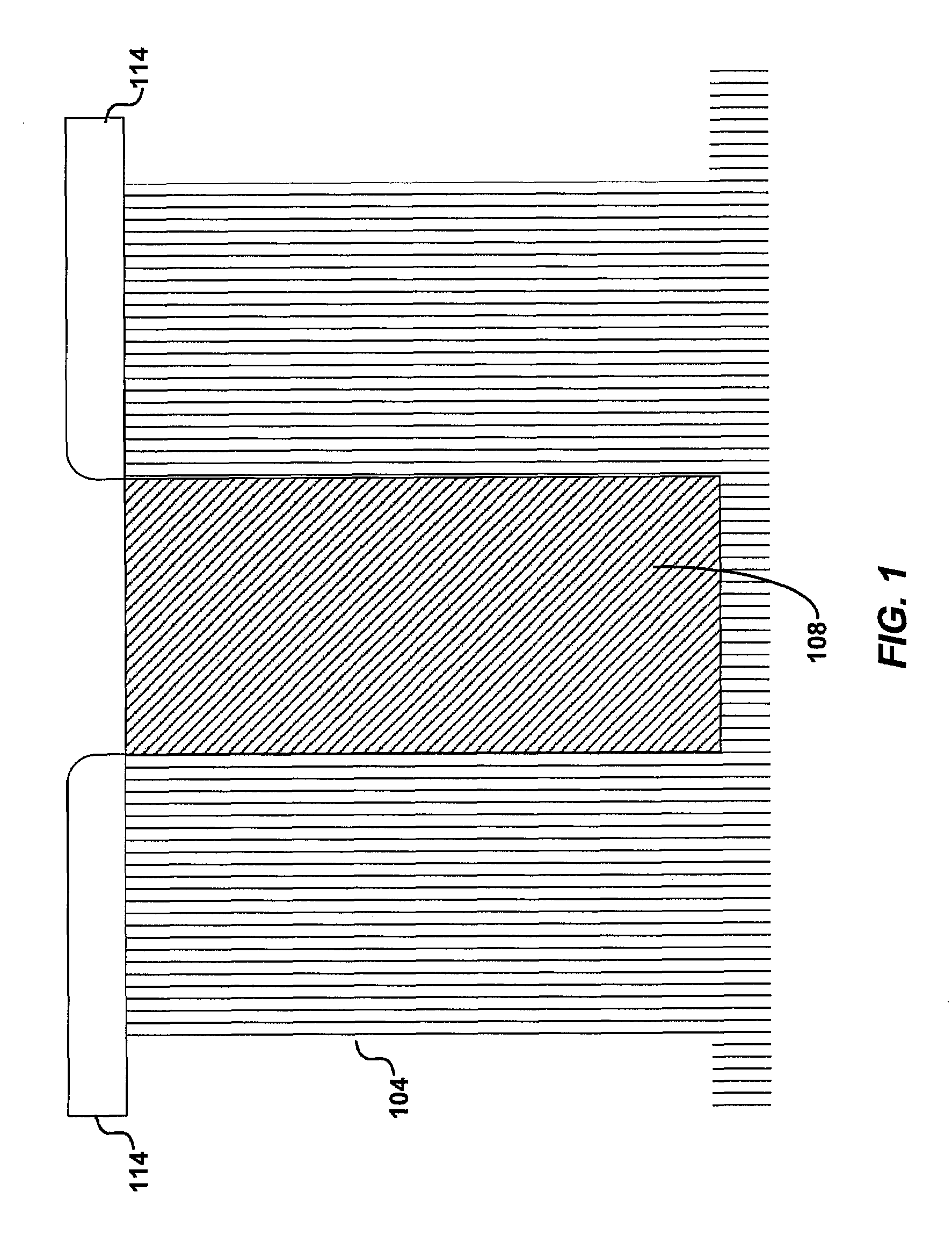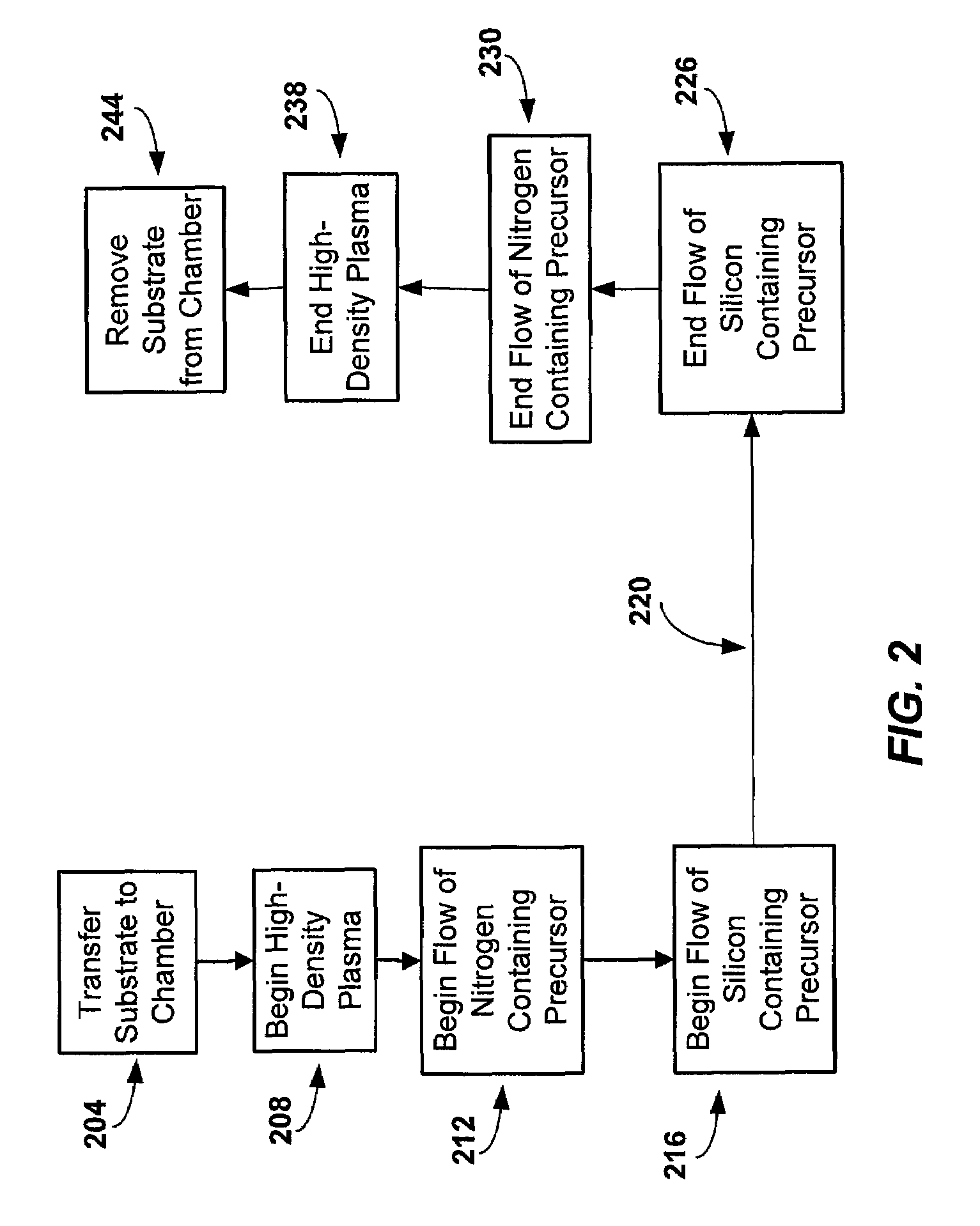Low wet etch rate silicon nitride film
a silicon nitride film, low wet etching technology, applied in vacuum evaporation coating, coating, plasma technique, etc., can solve the problems of reducing the utility of etching stop, reducing the energy required to activate chemical reaction, and higher etching rate, so as to reduce the deposition temperature and high quality
- Summary
- Abstract
- Description
- Claims
- Application Information
AI Technical Summary
Benefits of technology
Problems solved by technology
Method used
Image
Examples
Embodiment Construction
[0018]The present invention relates to methods of forming high quality silicon nitride films deposited using high density plasma CVD techniques. The high quality films exhibit low WERs compared to silicon oxide when both are exposed to the same etching agent. The low WER is achieved by a reduction in hydrogen content. The hydrogen content in the silicon nitride films may be below 10% or may be below 7% in different embodiments. The low hydrogen content of silicon nitride films deposited according to techniques of the invention can be achieved while the substrate is maintained at a relatively low temperature (<600° C.) during deposition.
[0019]Many applications which benefit from a silicon nitride film with a high density, low wet (or dry) oxide etch rate, high dielectric constant, high optical index of refraction, and other related physical properties would benefit from the use of embodiments of the present invention.
[0020]A significant impurity in prior art CVD silicon nitride films...
PUM
| Property | Measurement | Unit |
|---|---|---|
| temperature | aaaaa | aaaaa |
| temperature | aaaaa | aaaaa |
| mean pressure | aaaaa | aaaaa |
Abstract
Description
Claims
Application Information
 Login to View More
Login to View More - R&D
- Intellectual Property
- Life Sciences
- Materials
- Tech Scout
- Unparalleled Data Quality
- Higher Quality Content
- 60% Fewer Hallucinations
Browse by: Latest US Patents, China's latest patents, Technical Efficacy Thesaurus, Application Domain, Technology Topic, Popular Technical Reports.
© 2025 PatSnap. All rights reserved.Legal|Privacy policy|Modern Slavery Act Transparency Statement|Sitemap|About US| Contact US: help@patsnap.com



